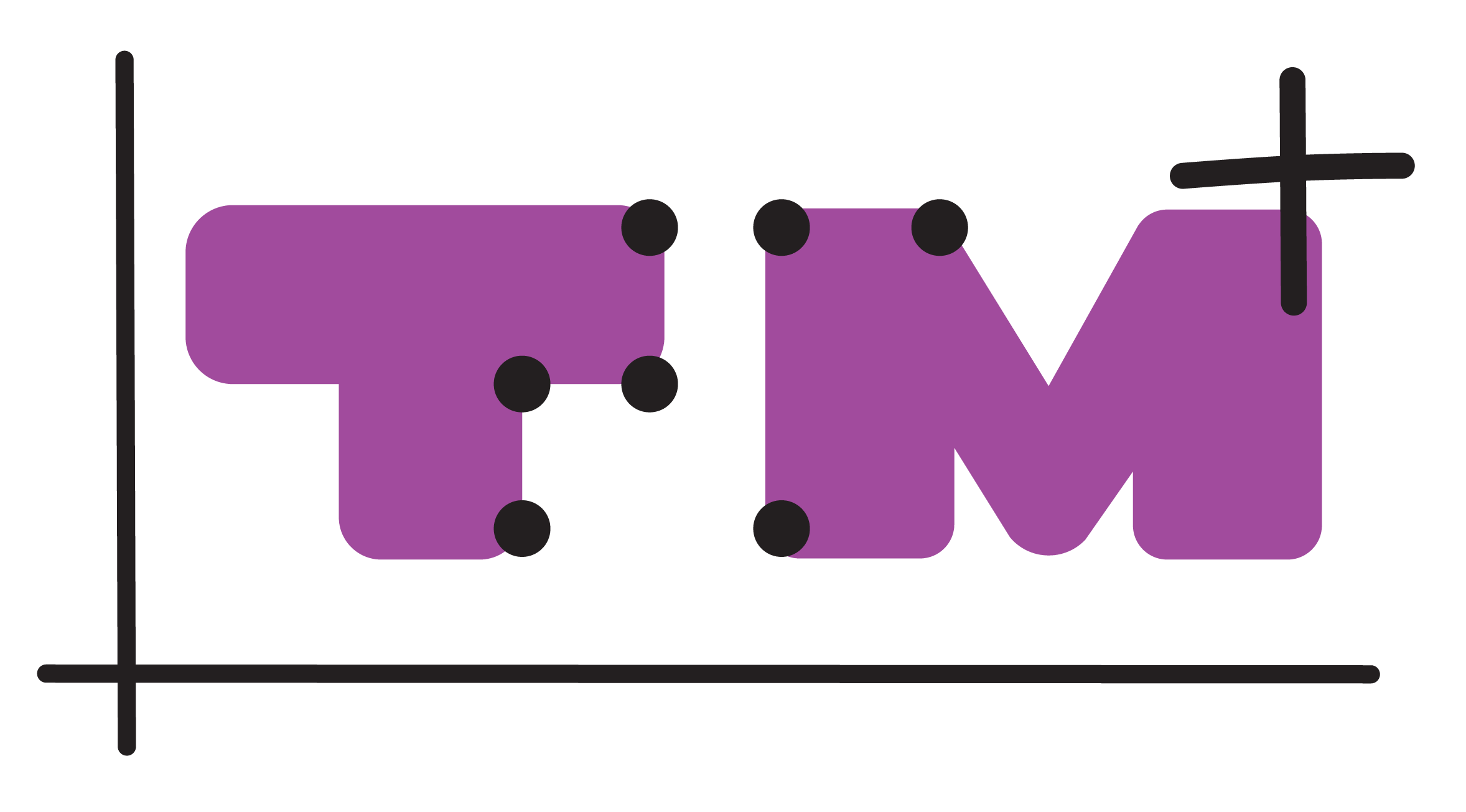Jump to:
Braille Reading
Tactile drawings of coordinate systems and graphs may contain text, numbers and symbols written in braille. Reading braille in tactile drawings may require different techniques than reading continuous text in braille on paper or the braille display.
Position of the Braille Cell
All letters and symbols in braille are composed of braille cells with 6 or 8 dots. To interpret a given character in braille, we need to know how the cell is positioned relative to a given reference line. In continuous text, the text lines will provide such a reference for the reader.
In tactile drawings, text, numbers or symbols will often be short strings placed close to an element of the drawing. Examples are legends, numbers and labels along the axes or names to separate different graphs. It is not always obvious to the reader how the different braille characters are placed relative to a reference line.
Help the braille reader to read the text and check whether their interpretation is correct. Also check if the braille on the drawings is easy to understand. See the guide on producing tactile coordinate systems and graphs for tips that may be helpful to reduce this problem.
6- or 8-Dot Braille
Most braille readers encounter mathematical text both on paper and on braille displays. In many countries, text on paper is in 6-dot braille and text on braille display is in 8-dot braille. As a result, braille readers must be adept at reading both 6-dot and 8-dot braille and be capable of writing in 8-dot braille. This task is not without its challenges, as numbers, mathematical operators, and capital letters are often represented differently in 6-dot and 8-dot braille. For example, in Dutch mathematical braille notation, the symbol ^ is displayed as ⠬ in 6-dot braille and as ⡬ in 8-dot braille. However, in 8-dot braille, the character ⠬ signifies the number 0. It is essential to assess whether the braille reader can comprehend mathematical text in both 6-dot and 8-dot braille. If they struggle with this, additional training is required.
Braille Placement
In visual drawings, we can reduce the font size or write vertically so that it becomes clear which parts of the drawing the text belongs to. This is not possible in braille.
An example is the placement of numbers along the axes so that they correspond to the unit lines. If there are multi-digit numbers and/or negative numbers, we need multiple braille cells to write the number. This may cause confusion about which unit line the number is connected to. Therefore, the braille reader must be familiar with the coordinate system and be able to count the lines along the axis. This is described in the instructional guide on coordinate systems and graphs for tactile image reading professionals
